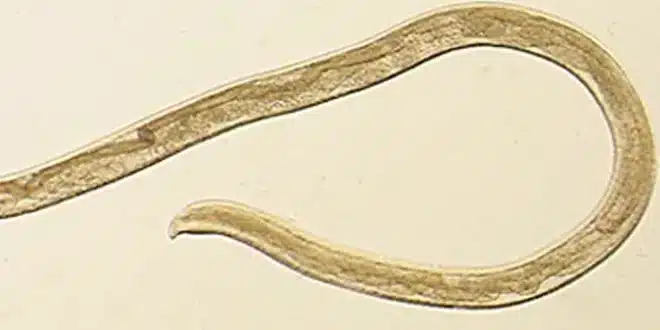The discovery of parasitic worms in the eyes of a black bear has raised significant concerns among scientists, who worry that these tiny organisms, known to cause blindness, could soon pose a threat to humans as well.
The worms are associated with a zoonotic disease called “Thelaziosis,” according to a research paper. The bear in question was killed in rural Pennsylvania in November last year. When scientists examined the bear, they found the worms—each less than two centimeters long—inside its eyes and extracted DNA for analysis.
This is the first instance of such parasites being found in a wild animal in the United States, according to the researchers.
Caroline Sobotyk, the lead author of the study and an assistant professor of clinical parasitology at the University of Pennsylvania, expressed concern about the potential risks to humans. “This discovery increases the risk for humans, as well as our pets and other animals, to contract this parasite,” she said.
While these worms have previously been found in pets, their presence in a wild animal raises fears that the parasite could spread more widely across the country.
A new research paper published in the Centers for Disease Control and Prevention’s Emerging Infectious Diseases journal also highlights the risk of “transmission to humans and domestic animals.”
Kevin Niedringhaus, a co-author of the study and an assistant professor of wildlife pathology at the University of Pennsylvania, noted that while direct transmission from wild animals to humans is unlikely, wildlife could serve as a “reservoir” for the parasite, potentially leading to indirect infections.
The infection is typically spread by flies, which act as carriers for the worms. These flies land near the eyes of animals or humans, feed on their tears, and transmit the worms. Symptoms of infection include eye ulcers and, in severe cases, blindness.
Niedringhaus explained, “The offspring of the worm is likely collected by the fly, which then carries it to another host, whether that’s another animal or a human.”
The widespread presence of black bears in the U.S. increases the likelihood of the parasite spreading, potentially affecting endangered and threatened species as well.
The first case of this parasite in the U.S. was identified in a Labrador retriever in 2018, with more cases in pets soon following. A subsequent study documented the presence of the worms in two cats and 11 dogs that had never left the United States.
The parasite was first identified globally in Southeast Asia in the early 1990s, with cases later emerging in Europe, according to an article in the academic journal Trends in Parasitology.


